Abstract
Reported are the results of an analysis of mortality trends from diarrhoeal diseases among under-5-year-olds in Mexico between 1978 and 1993 in relation to the impact of education, basic sanitation, and selected medical care practices. The study period was divided into three stages; the first pre-dated the widespread application of oral rehydration therapy (ORT); the second, covered the implementation of a nationwide programme promoting ORT; and the third included additional measures, such as immunization and improvements in basic sanitation. Mortality rates decreased progressively, at an average of 1.8% per year in the first stage, 6.4% in the second, and 17.8% in the third. The importance of literacy campaigns for women and the promotion of ORT was confirmed. Both of these measures reduced mortality; however, a greater reduction resulted from a massive immunization campaign against measles and improvements in sanitation (expansion of the drainage and piped water systems, improved water chlorination procedure, and effective prohibition of the use of sanitary sewage for vegetable irrigation).
Full text
PDF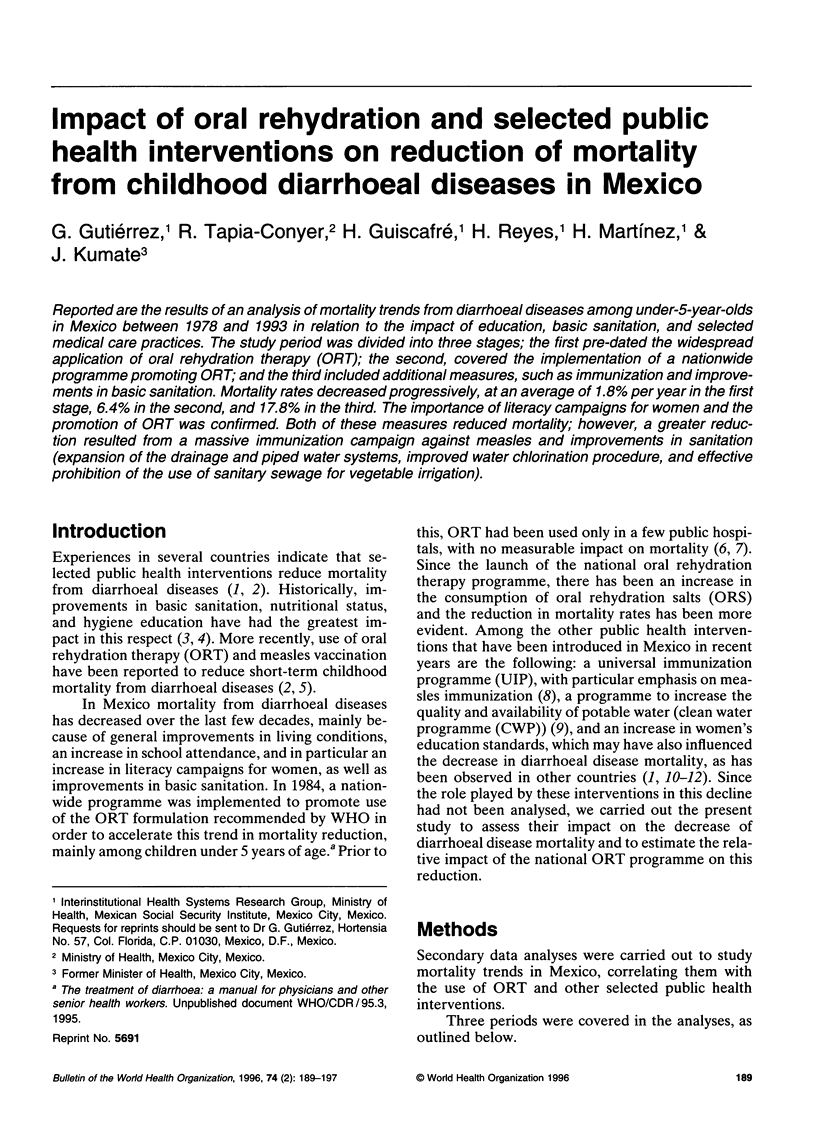
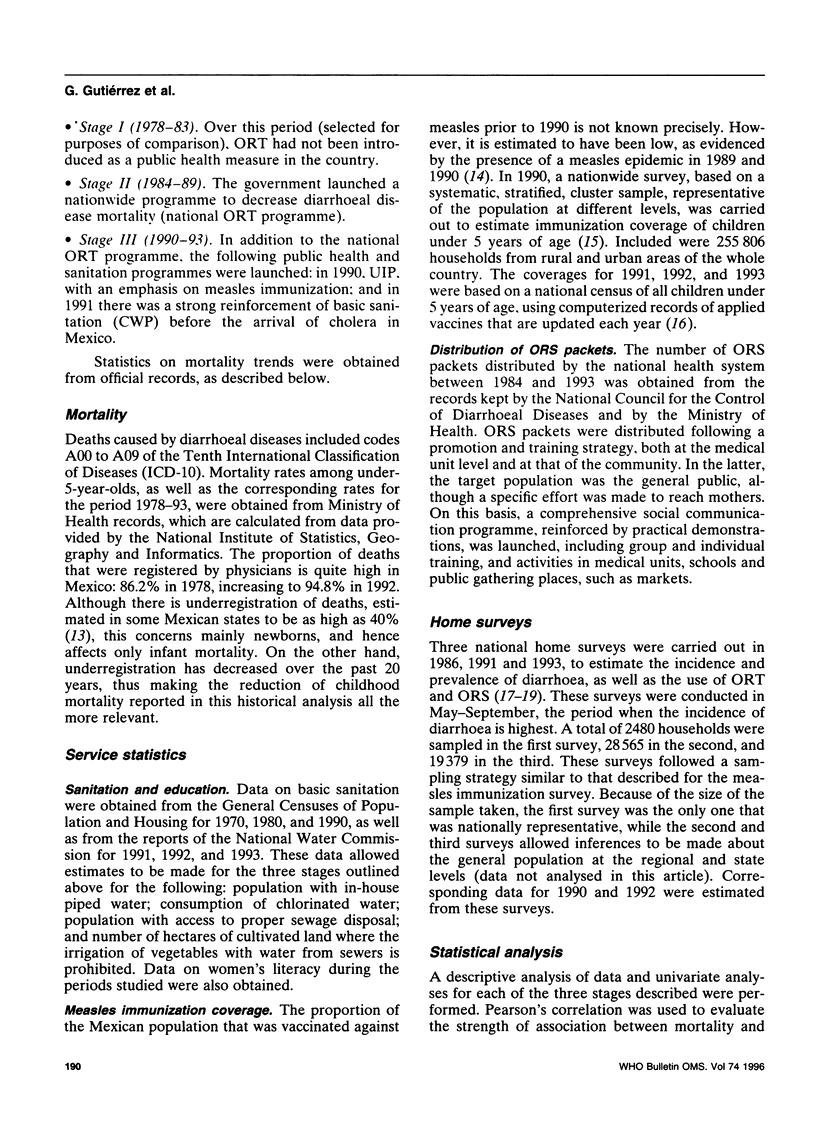
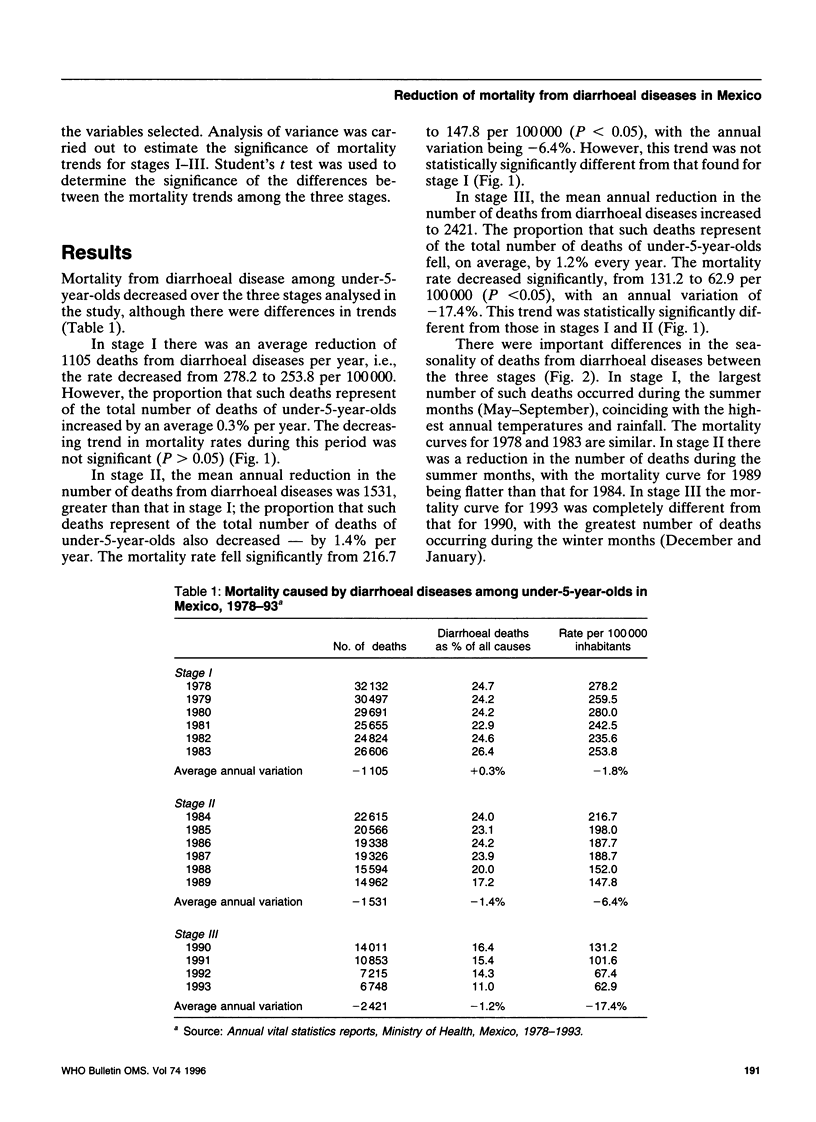
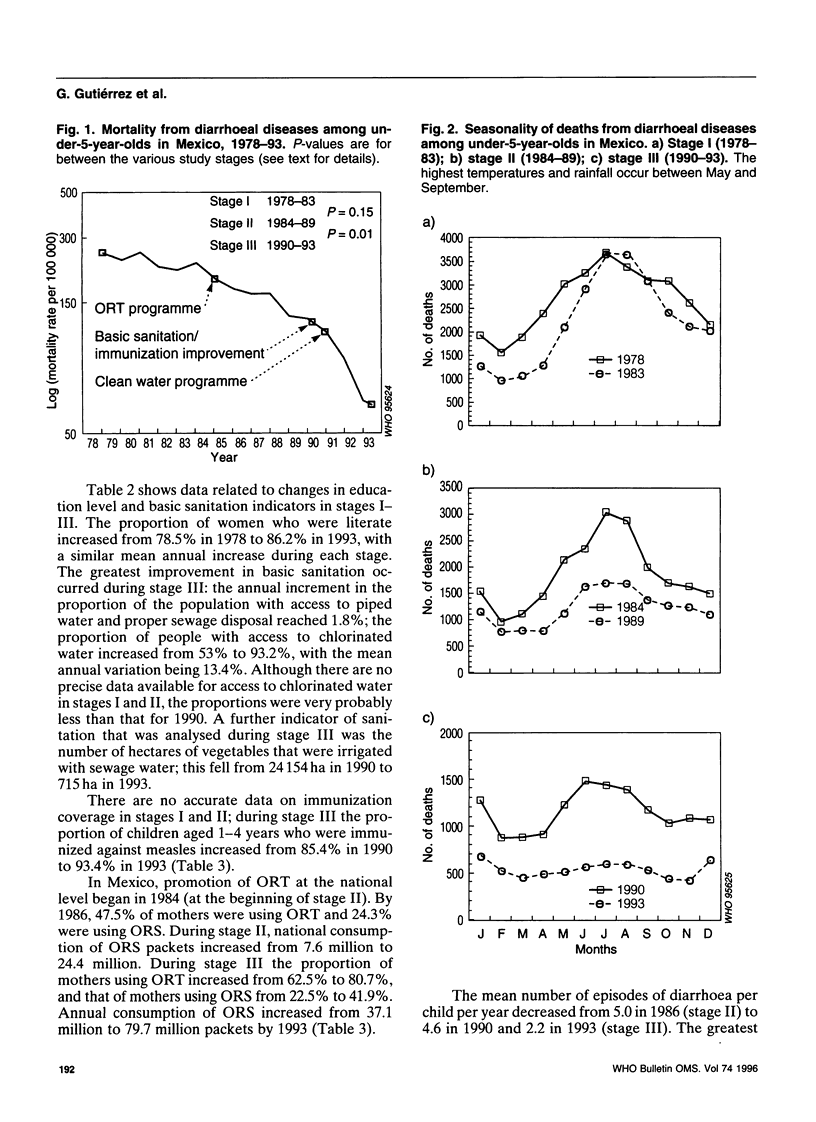
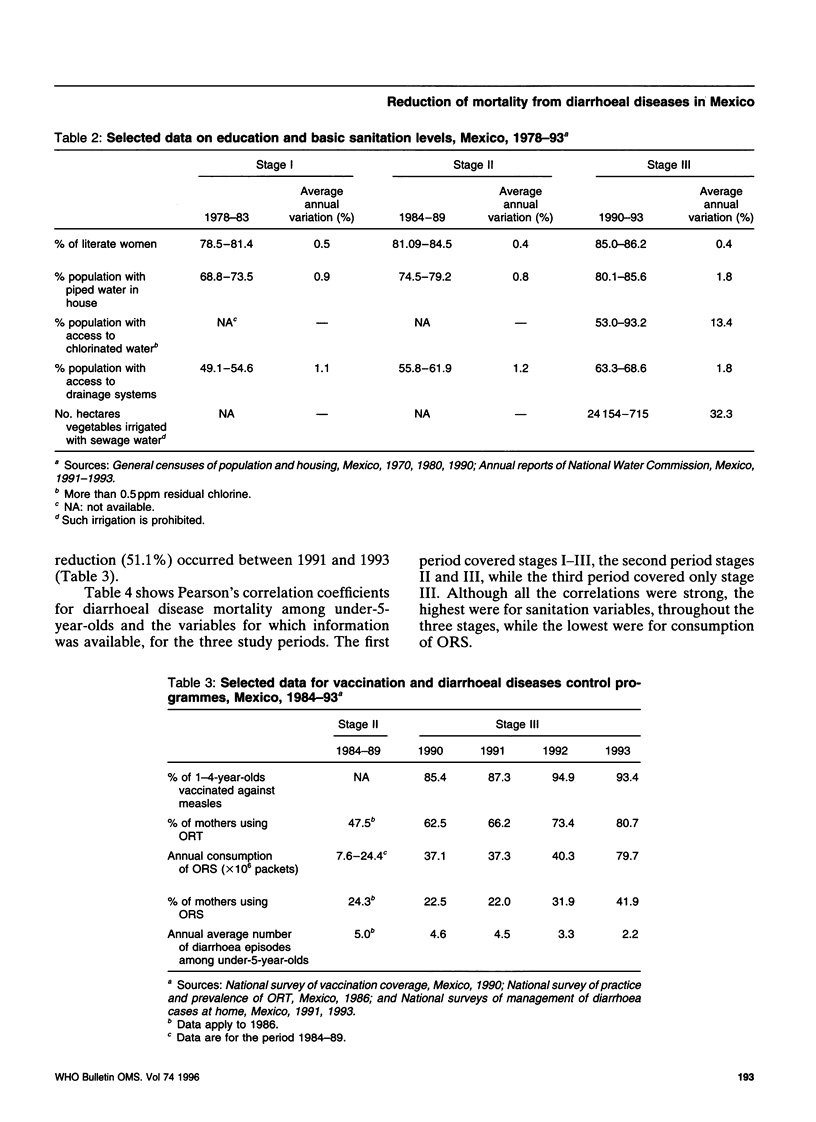

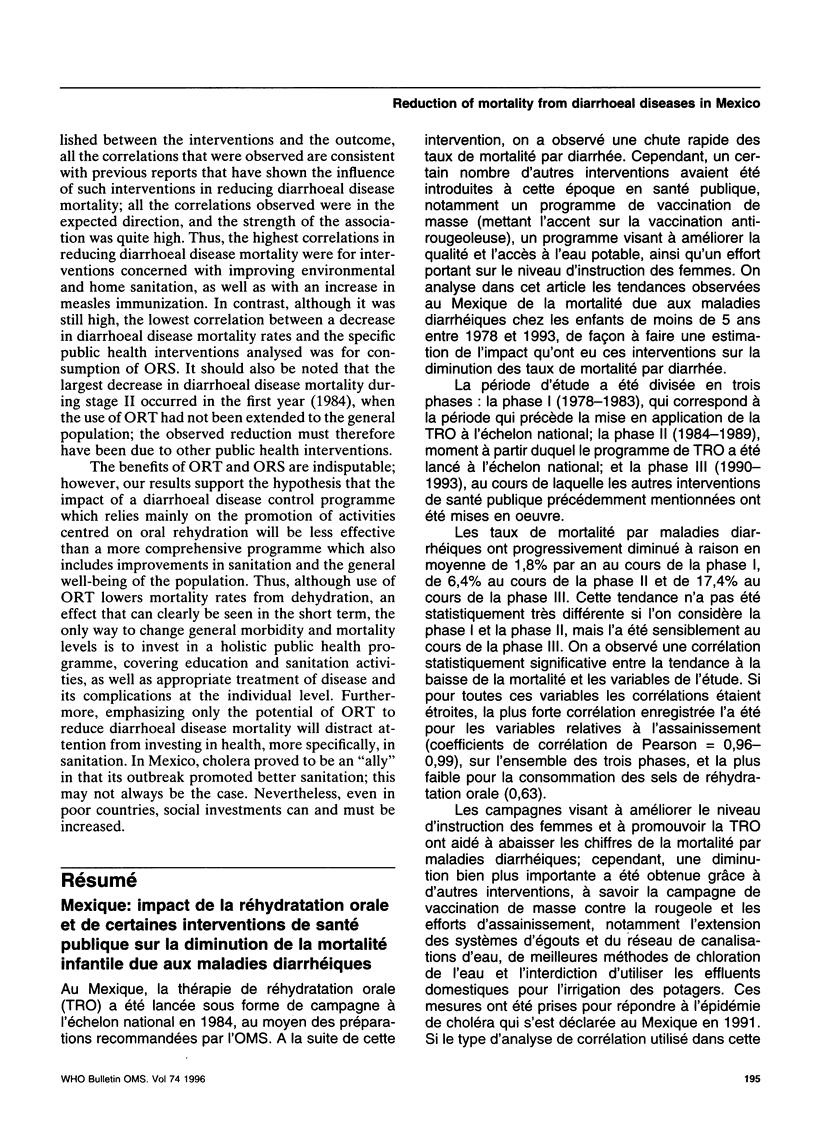
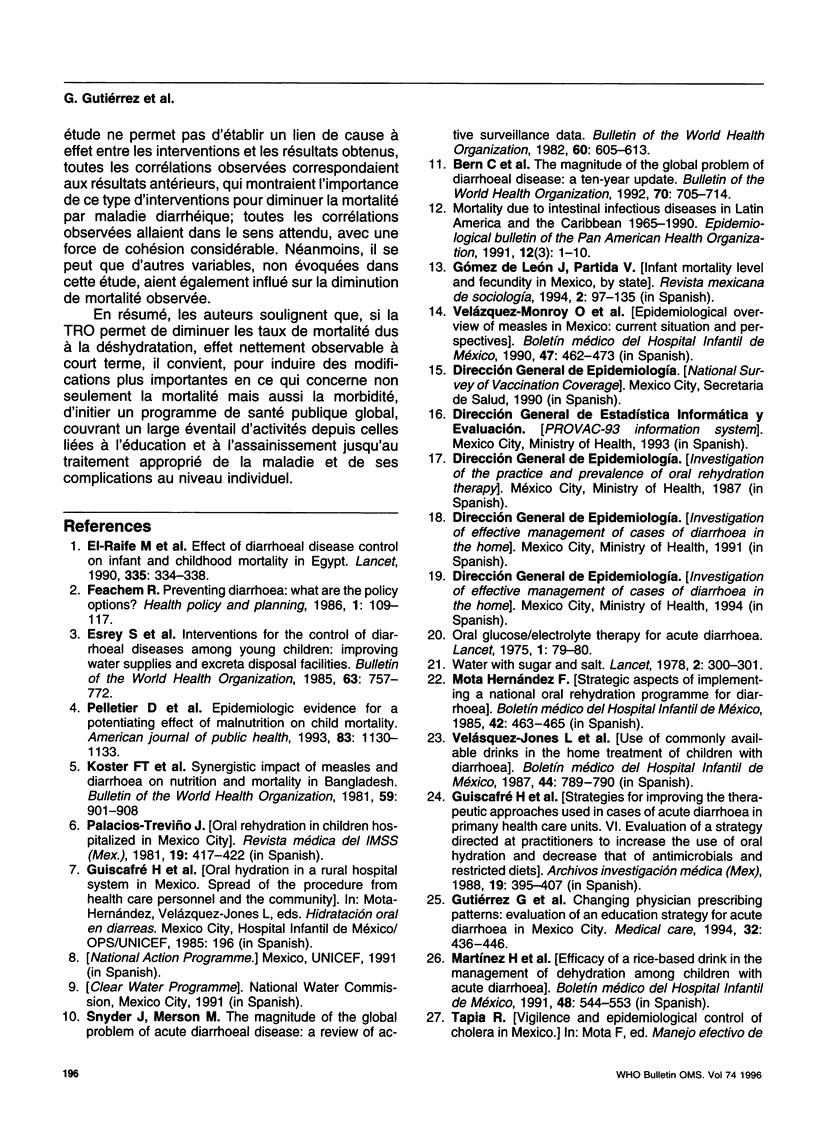
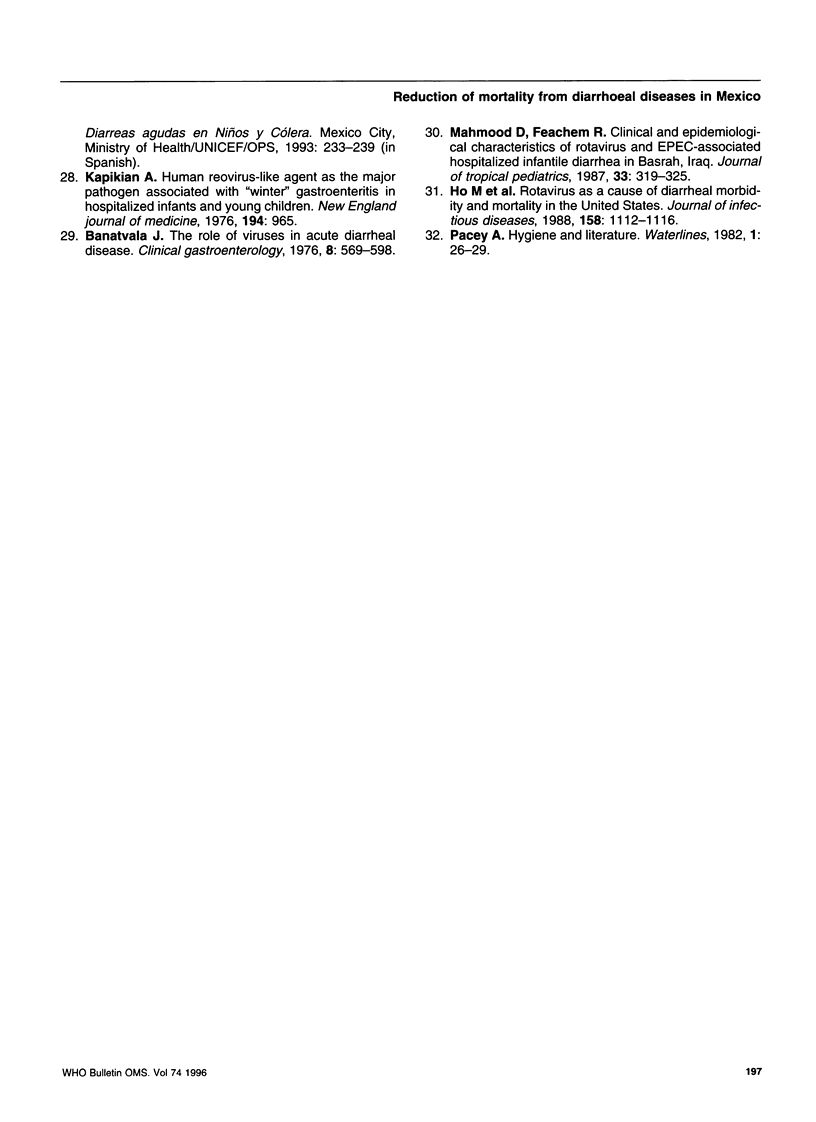
Selected References
These references are in PubMed. This may not be the complete list of references from this article.
- Banatvala J. E. The role of viruses in acute diarrhoeal disease. Clin Gastroenterol. 1979 Sep;8(3):569–598. [PubMed] [Google Scholar]
- Bern C., Martines J., de Zoysa I., Glass R. I. The magnitude of the global problem of diarrhoeal disease: a ten-year update. Bull World Health Organ. 1992;70(6):705–714. [PMC free article] [PubMed] [Google Scholar]
- Esrey S. A., Feachem R. G., Hughes J. M. Interventions for the control of diarrhoeal diseases among young children: improving water supplies and excreta disposal facilities. Bull World Health Organ. 1985;63(4):757–772. [PMC free article] [PubMed] [Google Scholar]
- Gutiérrez G., Guiscafré H., Bronfman M., Walsh J., Martínez H., Muñoz O. Changing physician prescribing patterns: evaluation of an educational strategy for acute diarrhea in Mexico City. Med Care. 1994 May;32(5):436–446. [PubMed] [Google Scholar]
- Ho M. S., Glass R. I., Pinsky P. F., Anderson L. J. Rotavirus as a cause of diarrheal morbidity and mortality in the United States. J Infect Dis. 1988 Nov;158(5):1112–1116. doi: 10.1093/infdis/158.5.1112. [DOI] [PubMed] [Google Scholar]
- Kapikian A. Z., Kim H. W., Wyatt R. G., Cline W. L., Arrobio J. O., Brandt C. D., Rodriguez W. J., Sack D. A., Chanock R. M., Parrott R. H. Human reovirus-like agent as the major pathogen associated with "winter" gastroenteritis in hospitalized infants and young children. N Engl J Med. 1976 Apr 29;294(18):965–972. doi: 10.1056/NEJM197604292941801. [DOI] [PubMed] [Google Scholar]
- Koster F. T., Curlin G. C., Aziz K. M., Haque A. Synergistic impact of measles and diarrhoea on nutrition and mortality in Bangladesh. Bull World Health Organ. 1981;59(6):901–908. [PMC free article] [PubMed] [Google Scholar]
- Mahmood D. A., Feachem R. G. Clinical and epidemiological characteristics of rotavirus- and EPEC-associated hospitalized infantile diarrhoea in Basrah, Iraq. J Trop Pediatr. 1987 Dec;33(6):319–325. doi: 10.1093/tropej/33.6.319. [DOI] [PubMed] [Google Scholar]
- Mota-Hernández F., Velásquez-Jones L. Aspectos estratégicos para la implantación de un Programa Nacional de Hidratación Oral en Diarreas. Bol Med Hosp Infant Mex. 1985 Aug;42(8):463–465. [PubMed] [Google Scholar]
- Pelletier D. L., Frongillo E. A., Jr, Habicht J. P. Epidemiologic evidence for a potentiating effect of malnutrition on child mortality. Am J Public Health. 1993 Aug;83(8):1130–1133. doi: 10.2105/ajph.83.8.1130. [DOI] [PMC free article] [PubMed] [Google Scholar]
- Snyder J. D., Merson M. H. The magnitude of the global problem of acute diarrhoeal disease: a review of active surveillance data. Bull World Health Organ. 1982;60(4):605–613. [PMC free article] [PubMed] [Google Scholar]
- United States. Supreme Court New York State Club Ass'n v. City of New York, 20 June 1988. Annu Rev Popul Law. 1988;15:158–158. [PubMed] [Google Scholar]
- Velásquez-Jones L., Kane-Quirós J., Puente-Tamayo M., García-Figueroa M. L., Ruiz-Bedolla E., Mota-Hernández F. Utilidad de bebidas de uso común en el hogar para niños con diarrea. Bol Med Hosp Infant Mex. 1987 Dec;44(12):789–790. [PubMed] [Google Scholar]
- Velázquez-Monroy O. J., Alvarez-Lucas C. H., Lezana-Fernández M. A., Avila-Figueroa C. Panorama epidemiológico del sarampión en México: situación actual y perspectivas. Bol Med Hosp Infant Mex. 1990 Jul;47(7):462–473. [PubMed] [Google Scholar]
- Water with sugar and salt. Lancet. 1978 Aug 5;2(8084):300–301. [PubMed] [Google Scholar]
- el-Rafie M., Hassouna W. A., Hirschhorn N., Loza S., Miller P., Nagaty A., Nasser S., Riyad S. Effect of diarrhoeal disease control on infant and childhood mortality in Egypt. Report from the National Control of Diarrheal Diseases Project. Lancet. 1990 Feb 10;335(8685):334–338. doi: 10.1016/0140-6736(90)90616-d. [DOI] [PubMed] [Google Scholar]


